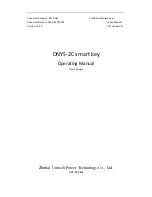
All rights reserved. Nothing herein should be stored in automated database or made public in any form or by any means, electr onic,
mechanical, photocopying, recording or otherwise, without prior permission from ASC Group. This publication may only be used for ASC products.
5
2
Assembly and use
2.5
Positioning of the Mobile Folding tower
Sureface
Always place the Folding tower a stable and horizontal surface. Make sure that the tower cannot sink
into the ground. In addition, the general slope of the surface may not be steeper than 1 degree. So,
at a height of 4 meters, the deviation may amount to a maximum of 4 cm.
Obstacles
Position the Folding tower in such a way that no danger to the user can arise when descending. Pay
attention to obstacles on the ground and/or obstacles at height. The user should reach the upper
platform without extra effort.
Maximum height
This depends on the placement and type of Folding tower (see Table 1).
Weather conditions
Consult the weather report to determine safety in various weather conditions. Consider the following
conditions and use common sense.
Wind force
Precipitation
Remove snow and ice from the Folding tower before starting work. If necessary, sprinkle sand on the
work floor to prevent slippage.
Cold
Avoid using mobile scaffold towers at temperatures below freezing.
2.6
Personal protection equipment
•
Always wear work gloves, safety shoes and a safety helmet.
•
When working at height, use a life-line.
2.7
Assembly
For checking for damage: see section 3.
There are no tools required for assembling a Folding tower. Folding towers are also not designed to
be hoisted.
At wind force 6 or higher a scaffold may not be used.
Also, any materials such as canvas that are installed must be removed.
Check all components (use the list of components) that are required for assembly, are
present and undamaged. Damaged components should not be used.




























